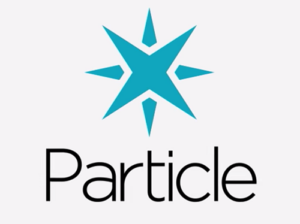 Newark is now shipping Particle, a range of next-generation cloud-connected development kits with mesh-enabled networking, making it possible to extend a sensor mesh network and get your devices connected to cloud, over Wi-Fi or Cellular networks, in minutes. The Particle IoT platforms offer everything needed to create a robust and securely connected IoT product, from device to cloud, with seamless transition from prototype to global deployment with Device Cloud hosted infrastructure.
Newark is now shipping Particle, a range of next-generation cloud-connected development kits with mesh-enabled networking, making it possible to extend a sensor mesh network and get your devices connected to cloud, over Wi-Fi or Cellular networks, in minutes. The Particle IoT platforms offer everything needed to create a robust and securely connected IoT product, from device to cloud, with seamless transition from prototype to global deployment with Device Cloud hosted infrastructure.
Particle offers three developments kits giving different connectivity options to the Particle Device Cloud: Cellular (Boron), Wi-Fi (Argon) and Mesh (Xenon):
- The Argon is a powerful Wi-Fi enabled development board that can act as either a standalone Wi-Fi endpoint or Wi-Fi enabled gateway for Particle Mesh networks. It is based on the Nordic nRF52840 and has built-in battery charging circuitry so it’s easy to connect a Li-Po and deploy a local network in minutes. The Argon is great for connecting existing projects to the Particle Device Cloud or as a gateway to connect an entire group of local endpoints.
- The Boron LTE is a powerful LTE CAT-M1/NB1 enabled development kit that can act as either a standalone cellular endpoint or LTE enabled gateway for Particle Mesh networks. It is based on the Nordic nRF52840 and has built-in battery charging circuitry so it’s easy to connect a Li-Po and deploy your local network in minutes. The Boron is great for connecting existing projects to the Particle Device Cloud or as a gateway to connect an entire group of local endpoints where Wi-Fi is missing or unreliable.
- The Xenon is a low-cost mesh-enabled development board that can act as either an endpoint or repeater within a Particle Mesh network. The Xenon is mesh only and designed to function as the endpoint of an IoT network. It is based on the Nordic nRF52840 and has built-in battery charging circuitry so it’s easy to connect a Li-Po and deploy your local network in minutes. The Xenon is best for connecting sensors, motors, pumps, valves, and points of data-interest. Pair it with an Argon or Boron gateway to get all that great data into the Device Cloud.
Particle development kits are available from Newark in North America, Farnell in EMEA and element14 in Asia Pacific. These are also featured on the Particle design center space on the element14 Community.


Leave a Reply
You must be logged in to post a comment.